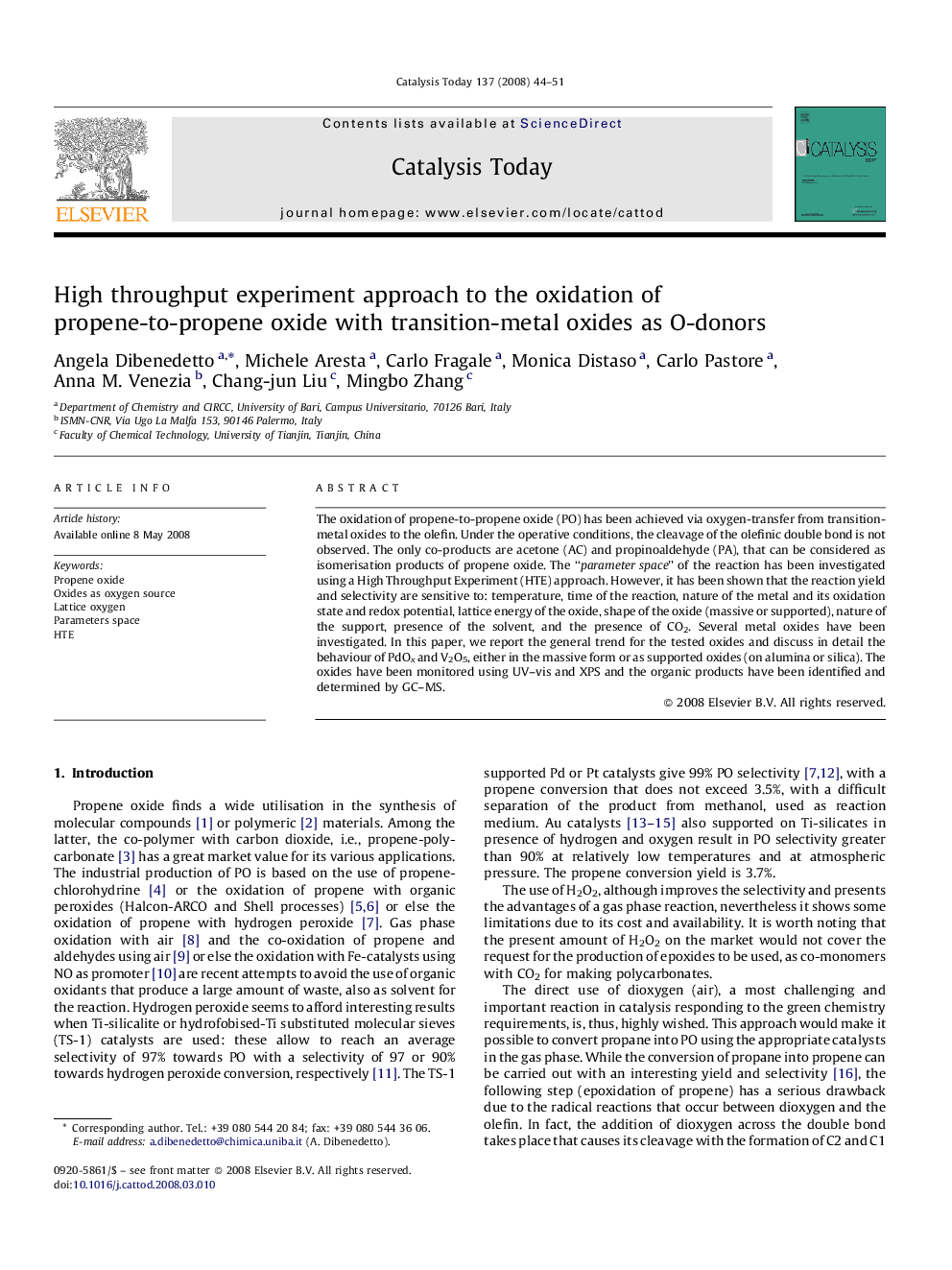| Article ID | Journal | Published Year | Pages | File Type |
|---|---|---|---|---|
| 57939 | Catalysis Today | 2008 | 8 Pages |
The oxidation of propene-to-propene oxide (PO) has been achieved via oxygen-transfer from transition-metal oxides to the olefin. Under the operative conditions, the cleavage of the olefinic double bond is not observed. The only co-products are acetone (AC) and propinoaldehyde (PA), that can be considered as isomerisation products of propene oxide. The “parameter space” of the reaction has been investigated using a High Throughput Experiment (HTE) approach. However, it has been shown that the reaction yield and selectivity are sensitive to: temperature, time of the reaction, nature of the metal and its oxidation state and redox potential, lattice energy of the oxide, shape of the oxide (massive or supported), nature of the support, presence of the solvent, and the presence of CO2. Several metal oxides have been investigated. In this paper, we report the general trend for the tested oxides and discuss in detail the behaviour of PdOx and V2O5, either in the massive form or as supported oxides (on alumina or silica). The oxides have been monitored using UV–vis and XPS and the organic products have been identified and determined by GC–MS.
